
Keywords: gambiae

|
Could a new gene-editing technique be a major breakthrough in the battle against malaria?B. Cottam, GEOGRAPHICAL, 2023.
The idea is that since female mosquitoes typically only mate once, the mass release of the sterile male mosquitoes should prevent wild females from producing future generations. Insect populations can and have already been successfully suppressed by the release of sterilised ... Keywords: Anopheles, gambiae, gene drive synthetic, incompatibility, malaria, models, population modification, population suppression |
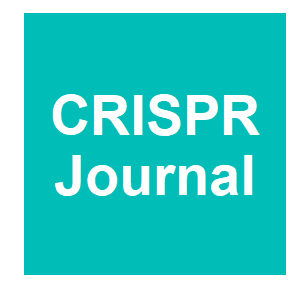
|
Measuring the Impact of Genetic Heterogeneity and Chromosomal Inversions on the Efficacy of CRISPR-Cas9 Gene Drives in Different Strains of Anopheles gambiaePescod, Poppy Bevivino, Giulia Anthousi, Amalia Shelton, Ruth Shepherd, Josephine Lombardo, Fabrizio Nolan, Tony, The CRISPR Journal, 2023.
The human malaria vector Anopheles gambiae is becoming increasingly resistant to insecticides, spurring the development of genetic control strategies. CRISPR-Cas9 gene drives can modify a population by creating double-stranded breaks at highly specific targets, triggering copying ... Keywords: Anopheles, gambiae, gene drive synthetic, incompatibility, malaria, models, population modification, population suppression |

|
A naturally occurring bacteria can stop the malaria parasite right in a mosquito’s gutA. Bhattacharya, Quartz, 2023.
Scientists at a GlaxoSmithKline (GSK) research facility in Spain discovered that a strain of Delftia tsuruhatensis bacterium, named Tres Cantos 1 (TC1), inhibits the malaria parasite in mosquitoes, known as Plasmodium. Researchers suspected something was going on when the ... Keywords: Anopheles, gambiae, gene drive synthetic, incompatibility, malaria, models, population modification, population suppression |

|
Delftia tsuruhatensis TC1 symbiont suppresses malaria transmission by anopheline mosquitoesW. Huang, J. Rodrigues, E. Bilgo, J. R. Tormo, J. D. Challenger, C. De Cozar-Gallardo, I. Pérez-Victoria, F. Reyes, P. Castañeda-Casado, E. J. Gnambani, D. F. d. S. Hien, M. Konkobo, B. Urones, I. Coppens, A. Mendoza-Losana, L. Ballell, A. Diabate, T. S., Science, 381:533-540. 2023.
Malaria control demands the development of a wide range of complementary strategies. We describe the properties of a naturally occurring, non?genetically modified symbiotic bacterium, Delftia tsuruhatensis TC1, which was isolated from mosquitoes incapable of sustaining the ... Keywords: Anopheles, gambiae, gene drive synthetic, incompatibility, malaria, models, population modification, population suppression |

|
Microbe stops mosquitoes from harboring malaria parasiteC. Offord, Science, 2023.
Researchers have tried to use microbes to control mosquito-borne diseases before. The virus-fighting bacterium Wolbachia pipientis has shown particular promise against dengue fever in recent clinical trials and is already used in some areas of the world. But most methods for ... Keywords: Anopheles, gambiae, gene drive synthetic, incompatibility, malaria, models, population modification, population suppression |

|
Cost-effectiveness of Precision Guided SIT for Control of Anopheles gambiae in the Upper River Region, The GambiaG. William, R. Robyn, M. Agastya, M. S. C. Hector, S. Andrea, Z. David, G. I. Patrick, D. Umberto, Alessandro, M. M. John and A. Omar, bioRxiv, 2023.07.20.549762. 2023.
Precision-guided sterile insect technique (pgSIT) is an extremely promising vector control intervention that can reduce and potentially eliminate the unacceptable malaria burden, particularly in sub-Saharan Africa. Here we explore the cost effectiveness of using this approach in ... Keywords: Anopheles, gambiae, gene drive synthetic, incompatibility, malaria, models, population modification, population suppression |

|
Eliminating Malaria Vectors with Precision Guided Sterile MalesL. S. Andrea, A. A. Reema, J. P. James, L. C. Martha, C. Sanle, M. Agastya, M. S. C. Hector, A. Igor, M. M. John and S. A. Omar, bioRxiv, 2023.07.20.549947. 2023.
Controlling the principal African malaria vector, the mosquito Anopheles gambiae, is considered essential to curtail malaria transmission. However existing vector control technologies rely on insecticides, which are becoming increasingly ineffective. Sterile insect technique ... Keywords: Anopheles, gambiae, gene drive synthetic, incompatibility, malaria, models, population modification, population suppression |

|
Bukedi sub-region to receive new high-level malaria prevention technologyWatchdog Uganda, WATCHDOG, 2023.
President Yoweri Kaguta Museveni together with a group of scientists have agreed to start with Bukedi Sub-region as a pilot area for a new mosquito radiation sterilisation technology aimed at preventing malaria. “Let us start with the Bukedi Sub- region to pilot this method ... Keywords: Anopheles, gambiae, gene drive synthetic, incompatibility, malaria, models, population modification, population suppression |

|
Mosquitoes spread malaria. These researchers want them to fight it insteadG. Brumfiel, NPR, 2023.
Mosquitoes carry malaria, which kills hundreds of thousands of people each year. Now some researchers are trying to use genetic engineering to make the pesky insects into allies in the fight against the disease. The approach is a radical departure from traditional ways of ... Keywords: Anopheles, gambiae, gene drive synthetic, incompatibility, malaria, models, population modification, population suppression |

|
Hybrid incompatibilities in the anopheles gambiae species complexA. Kriezis, Imperial College London, 2023.
Malaria is an infectious disease caused by parasites of the genus Plasmodium which is responsible for approximately 400,000 deaths annually, primarily in sub-Saharan Africa. Malaria is transmitted by mosquitoes belonging to the Anopheles gambiae species complex. While progress ... Keywords: Anopheles, gambiae, gene drive synthetic, incompatibility, malaria, models, population modification, population suppression |

|
Gene Drives Could Fight Malaria and Other Global Killers but Might Have Unintended ConsequencesM. Cobb, Scientific American, 2023.
Every year more than 600,000 people die from mosquito-transmitted malaria, most of them children under age five. Some insects that are disease vectors, such as mosquitoes, are currently expanding their range around the world, bringing new threats. Genetic engineering can fix this ... Keywords: Anopheles, gambiae, gene drive synthetic, incompatibility, malaria, models, population modification, population suppression |

|
Determining the landscape of resistance to gene drives in the malaria mosquitoI. Morianou, Imperial College London, 2022.
Gene drives are engineered selfish genetic elements with the potential to spread throughout entire insect populations for sustainable vector control. Recently, a gene drive was shown to eliminate caged populations of the malaria mosquito by targeting the highly conserved ... Keywords: Anopheles, gambiae, gene drive synthetic, incompatibility, malaria, models, population modification, population suppression |

|
Anopheles homing suppression drive candidates exhibit unexpected performance differences in simulations with spatial structureS. E. Champer, I. K. Kim, A. G. Clark, P. W. Messer and J. Champer, eLife, 11:e79121. 2022.
Recent experiments have produced several Anopheles gambiae homing gene drives that disrupt female fertility genes, thereby eventually inducing population collapse. Such drives may be highly effective tools to combat malaria. One such homing drive, based on the zpg promoter ... Keywords: Anopheles, gambiae, gene drive synthetic, incompatibility, malaria, models, population modification, population suppression |

|
Scientists engineer mosquitoes that cannot spread malariaJ. Dalton, Independen, 2022.
Scientists have engineered mosquitoes that cannot give humans malaria, saying their work could potentially eliminate the disease. Researchers at Imperial College London genetically modified the insects so that the growth of malaria-causing parasites in their guts was slowed. Keywords: Anopheles, gambiae, gene drive synthetic, incompatibility, malaria, models, population modification, population suppression |

|
Scientists Engineer Mosquitoes That Can’t Transmit MalariaC. Murez, US News, 2022.
The fight against malaria could hinge on genetically engineered mosquitoes that have something called "gene drive."Researchers from the Transmission: Zero team at Imperial College London report that they have engineered mosquitoes that slow the growth in their gut of the ... Keywords: Anopheles, gambiae, gene drive synthetic, incompatibility, malaria, models, population modification, population suppression |

|
Mosquitoes that can’t spread malaria engineered by scientists, 2022.Scientists have engineered mosquitoes that slow the growth of malaria-causing parasites in their gut, preventing transmission of the disease to humans The genetic modification causes mosquitoes to produce compounds in their guts that stunt the growth of parasites, meaning they ... Keywords: Anopheles, gambiae, gene drive synthetic, incompatibility, malaria, models, population modification, population suppression |

|
Scientists engineer mosquitoes that can’t spread malariaS. Varshney, Gamacher Central, 2022.
Scientists have engineered mosquitoes that slow the growth of malaria-causing parasites in their gut, preventing transmission of the disease to humans. The genetic modification causes mosquitoes to produce compounds in their guts that stunt the growth of parasites, meaning they ... Keywords: Anopheles, gambiae, gene drive synthetic, incompatibility, malaria, models, population modification, population suppression |

|
Mosquitoes with honeybee DNA could tame malariaR. Blakely, The Times, 2022.
A new form of genetically engineered mosquito could reduce the spread of malaria in Africa, a study suggests. The addition of DNA from a honeybee and genetic material from the African clawed frog prompt the new mosquitoes to produce compounds to stunt the growth of the parasite ... Keywords: Anopheles, gambiae, gene drive synthetic, incompatibility, malaria, models, population modification, population suppression |

|
Genetically Engineered Mosquitoes Prevented the Growth of Malaria-causing Parasites in Their GutP. Mozter, Nature World News 2022, 2022.
Abstract: Scientists have created mosquitoes that inhibit the development of malaria-causing parasites in their stomachs, therefore decreasing disease transmission to people. The genetic change allows mosquitoes to create substances in their intestines that inhibit parasite ... Keywords: Anopheles, gambiae, gene drive synthetic, incompatibility, malaria, models, population modification, population suppression |

|
Mosquitoes are being genetically modified so they can’t spread malariaM. Le Page, New Scientist, 2022.
Gene editing mosquitoes so they die before malaria parasites can develop inside them could stop the spread of the deadly parasite entirely, Keywords: Anopheles, gambiae, gene drive synthetic, incompatibility, malaria, models, population modification, population suppression |

|
Genetically-modified mosquitoes could ‘help wipe out malaria’S. Knapton, The Telegraph, 2022.
Mosquitoes that cannot spread malaria have been genetically engineered by British scientists, in a breakthrough that could help eliminate the disease. ... Keywords: Anopheles, gambiae, gene drive synthetic, incompatibility, malaria, models, population modification, population suppression |

|
Gene drive mosquitoes can aid malaria elimination by retarding Plasmodium sporogonic developmentHoermann, Astrid, Habtewold, Tibebu, Selvaraj, Prashanth, Del Corsano, Giuseppe, Capriotti, Paolo, Inghilterra, Maria Grazia, Kebede, Temesgen M., Christophides, George K. and Windbichler, Nikolai, Science Advances, 2022.
Gene drives hold promise for the genetic control of malaria vectors. The development of vector population modification strategies hinges on the availability of effector mechanisms impeding parasite development in transgenic mosquitoes. We augmented a midgut gene of the malaria ... Keywords: Anopheles, gambiae, gene drive synthetic, incompatibility, malaria, models, population modification, population suppression |

|
Scientists engineer mosquitoes that can’t spread malariaImperial College London, Phys Org, 2022.
Scientists have engineered mosquitoes that slow the growth of malaria-causing parasites in their gut, preventing transmission of the disease to humans. The genetic modification causes mosquitoes to produce compounds in their guts that stunt the growth of parasites, meaning they ... Keywords: Anopheles, gambiae, gene drive synthetic, incompatibility, malaria, models, population modification, population suppression |
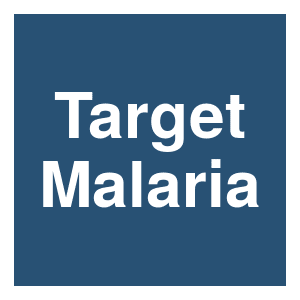
|
What do we mean by “Target Organism” in Target Malaria’s gene drive research?J. B. Connolly, Target Malaria, 2022.
In the wild and in laboratory settings, sibling mosquito species can successfully mate to produce viable offspring, regardless of whether they are vectors or not. Importantly, females, but not males, of these offspring can be fertile. Nonetheless, the likelihood of finding such ... Keywords: Anopheles, gambiae, gene drive synthetic, incompatibility, malaria, models, population modification, population suppression |
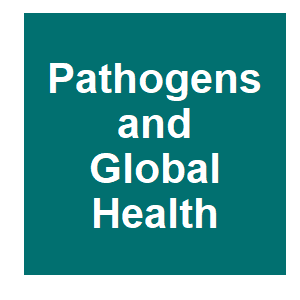
|
Comprehensive characterization of a transgene insertion in a highly repetitive, centromeric region of Anopheles mosquitoesM. Vitale, C. Leo, T. Courty, N. Kranjc, J. B. Connolly, G. Morselli, C. Bamikole, R. E. Haghighat-Khah, F. Bernardini and S. Fuchs, Pathogens and Global Health, 2022.
The availability of the genomic sequence of the malaria mosquito Anopheles gambiae has in recent years sparked the development of transgenic technologies with the potential to be used as novel vector control tools. These technologies rely on genome editing that confer traits able ... Keywords: Anopheles, gambiae, gene drive synthetic, incompatibility, malaria, models, population modification, population suppression |

|
A population modification gene drive targeting both Saglin and Lipophorin disables Plasmodium transmission in Anopheles mosquitoesE. I. Green, E. Jaouen, D. Klug, R. P. Olmo, A. Gautier, S. A. Blandin and E. Marois, bioRxiv, 2022.07.08.499187. 2022.
Lipophorin is an essential, highly expressed lipid transporter protein that is secreted and circulates in insect hemolymph. We hijacked the Anopheles gambiae Lipophorin gene to make it co-express a single-chain version of antibody 2A10, which binds sporozoites of the malaria ... Keywords: Anopheles, gambiae, gene drive synthetic, incompatibility, malaria, models, population modification, population suppression |
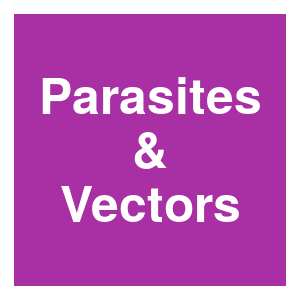
|
Sexual transmission of Anopheles gambiae densovirus (AgDNV) leads to disseminated infection in mated femalesK. L. Werling, R. M. Johnson, H. C. Metz and J. L. Rasgon, Parasites and Vectors, 15:219. 2022.
Anopheles gambiae densovirus (AgDNV) is an insect-specific, single-stranded DNA virus that infects An. gambiae sensu stricto (s.s.), the major mosquito species responsible for transmitting malaria parasites throughout sub-Saharan Africa. AgDNV is a benign virus that is very ... Keywords: Anopheles, gambiae, gene drive synthetic, incompatibility, malaria, models, population modification, population suppression |

|
Testing non-autonomous antimalarial gene drive effectors using self-eliminating drivers in the African mosquito vector Anopheles gambiaeD. A. Ellis, G. Avraam, A. Hoermann, C. A. S. Wyer, Y. X. Ong, G. K. Christophides and N. Windbichler, PLOS Genetics, 18:e1010244. 2022.
Author summary Gene drive is a method that allows the genetic modification of entire populations of harmful organisms. Their application to tackle invasive species, agricultural pests or insect disease vectors has been suggested. For example, they could reduce the capacity of ... Keywords: Anopheles, gambiae, gene drive synthetic, incompatibility, malaria, models, population modification, population suppression |
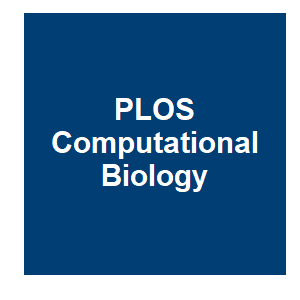
|
Spatial modelling for population replacement of mosquito vectors at continental scaleN. J. Beeton, A. Wilkins, A. Ickowicz, K. R. Hayes and G. R. Hosack, PLOS Computational Biology, 18:e1009526. 2022.
Malaria is one of the deadliest vector-borne diseases in the world. Researchers are developing new genetic and conventional vector control strategies to attempt to limit its burden. Novel control strategies require detailed safety assessment to ensure responsible and successful ... Keywords: Anopheles, gambiae, gene drive synthetic, incompatibility, malaria, models, population modification, population suppression |

|
Genetically altered mosquitoes to close gaps in malaria fightM. Murigi, People Daily, 2022.
In 2020, nearly 6.9 million cases of malaria and about 742 deaths were confirmed in Kenya according to the Kenya Malaria Indicator Survey (KMIS) 2020. Although the number of reported infections declined from 10.9 million in 2018, the disease is still one of the main health ... Keywords: Anopheles, gambiae, gene drive synthetic, incompatibility, malaria, models, population modification, population suppression |

|
Expanding the flexibility of genome editing approaches for population control of the malaria mosquitoN. Kranjc, Imperial College London-PhD, 2022.
Discovery and adaptation of CRISPR-Cas systems for genome editing have allowed us to gain an efficient and yet simple tool for genetic manipulation in various fields of molecular biology and biotechnology. One of the most promising applications is the use of CRISPR-Cas9 ... Keywords: Anopheles, gambiae, gene drive synthetic, incompatibility, malaria, models, population modification, population suppression |

|
Finding the strongest gene drive: Simulations reveal unexpected performance differences between Anopheles homing suppression drive candidatesS. E. Champer, I. K. Kim, A. G. Clark, P. W. Messer and J. Champer, bioRxiv, 2022.03.28.486009. 2022.
Recent experiments have produced several Anopheles gambiae homing gene drives that disrupt female fertility genes, thereby eventually inducing population collapse. Such drives may be highly effective tools to combat malaria. One such homing drive, based on the zpg promoter ... Keywords: Anopheles, gambiae, gene drive synthetic, incompatibility, malaria, models, population modification, population suppression |

|
Spatial modelling for population replacement of mosquito vectors at continental scaleN. J. Beeton, A. Wilkins, A. Ickowicz, K. R. Hayes and G. R. Hosack, bioRxiv, 2021.10.06.463299. 2022.
Malaria is one of the deadliest vector-borne diseases in the world. Researchers are developing new genetic and conventional vector control strategies to attempt to limit its burden. Novel control strategies require detailed safety assessment to ensure responsible and successful ... Keywords: Anopheles, gambiae, gene drive synthetic, incompatibility, malaria, models, population modification, population suppression |

|
Gene drive mosquitoes can aid malaria elimination by retarding Plasmodium sporogonic developmentA. Hoermann, T. Habtewold, P. Selvaraj, G. Del Corsano, P. Capriotti, M. G. Inghilterra, K. M. Temesgen, G. K. Christophides and N. Windbichler, bioRxiv, 2022.02.15.480588. 2022.
Gene drives hold promise for the genetic control of malaria vectors. The development of vector population modification strategies hinges on the availability of effector mechanisms impeding parasite development in transgenic mosquitoes. We augmented a midgut gene of the malaria ... Keywords: Anopheles, gambiae, gene drive synthetic, incompatibility, malaria, models, population modification, population suppression |
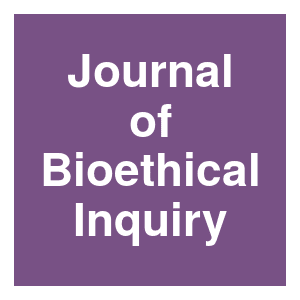
|
An Ethical Overview of the CRISPR-Based Elimination of Anopheles gambiae to Combat MalariaI. J. Wise and P. Borry, Journal of Bioethical Inquiry, 2022.
Approximately a quarter of a billion people around the world suffer from malaria each year. Most cases are located in sub-Saharan Africa where Anopheles gambiae mosquitoes are the principal vectors of this public health problem. With the use of CRISPR-based gene drives, the ... Keywords: Anopheles, gambiae, gene drive synthetic, incompatibility, malaria, models, population modification, population suppression |

|
C-type lectin 4 regulates broad-spectrum melanization-based refractoriness to malaria parasitesM. L. Simões, Y. Dong, G. Mlambo and G. Dimopoulos, PLOS Biology, 20:e3001515. 2022.
Anopheles gambiae melanization-based refractoriness to the human malaria parasite Plasmodium falciparum has rarely been observed in either laboratory or natural conditions, in contrast to the rodent model malaria parasite Plasmodium berghei that can become completely melanized by ... Keywords: Anopheles, gambiae, gene drive synthetic, incompatibility, malaria, models, population modification, population suppression |
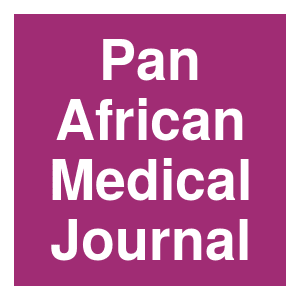
|
Gene-drive mosquitoes, a prospect for future malaria controlS. A. Monawwer, A. O. I. Alzubaidi, F. Yasmin, S. M. Q. Haimour, S. M. I. Shay and I. Ullah, Pan African Medical Journal, 41:2-6. 2022.
Despite major developments in malaria control over the past two decades, the disease continues to scourge the human population across the globe. Rising concerns such as insecticide resistance amongst vector mosquitoes are a cause of huge fear amongst healthcare providers and ... Keywords: Anopheles, gambiae, gene drive synthetic, incompatibility, malaria, models, population modification, population suppression |

|
Scientists find transmission chain-breaker, give new hope for fight against malariaANI, ANI, 2022.
A recent study, published online in 'PLoS Biology', has revealed that blocking a key protein found in Anopheles gambiae mosquitoes -- the principal vector for malaria transmission to humans in Africa could thwart infection with malaria parasites and thus prevent them from ... Keywords: Anopheles, gambiae, gene drive synthetic, incompatibility, malaria, models, population modification, population suppression |

|
Modeling impact and cost-effectiveness of driving-Y gene drives for malaria elimination in the Democratic Republic of the CongoN. Metchanun, C. Borgemeister, G. Amzati, J. von Braun, M. Nikolov, P. Selvaraj and J. Gerardin, Evolutionary Applications, 2021.
Malaria elimination will be challenging in countries that currently continue to bear high malaria burden. Sex-ratio distorting gene drives, such as driving-Y, could play a role in an integrated elimination strategy if they can effectively suppress vector populations. Using a ... Keywords: Anopheles, gambiae, gene drive synthetic, incompatibility, malaria, models, population modification, population suppression |
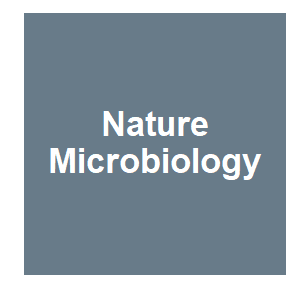
|
Wolbachia cifB induces cytoplasmic incompatibility in the malaria mosquito vectorK. L. Adams, D. G. Abernathy, B. C. Willett, E. K. Selland, M. A. Itoe and F. Catteruccia, Nature Microbiology, 6:1575-1582. 2021.
Wolbachia, a maternally inherited intracellular bacterial species, can manipulate host insect reproduction by cytoplasmic incompatibility (CI), which results in embryo lethality in crosses between infected males and uninfected females. CI is encoded by two prophage genes, cifA ... Keywords: Anopheles, gambiae, gene drive synthetic, incompatibility, malaria, models, population modification, population suppression |

|
Two years of laboratory studies on the non gene drive genetically modified sterile male mosquitoes concluded successfully in MaliM. Coulibaly, Target Malaria, 2021.
The Target Malaria Mali team at the Malaria Research and Training Centre (MRTC) based at the University of Sciences, Techniques and Technologies of Bamako (USTTB) is proud to have been the first Malian research team to work on non gene drive genetically modified sterile male ... Keywords: Anopheles, gambiae, gene drive synthetic, incompatibility, malaria, models, population modification, population suppression |

|
Spatial modelling for population replacement of mosquito vectors at continental scaleN. J. Beeton, A. Wilkins, A. Ickowicz, K. R. Hayes and G. R. Hosack, bioRxiv, 2021.10.06.463299. 2021.
We explore transmission of the gene drive between the subspecies, different hybridisation mechanisms, the effects of both local dispersal and potential wind-aided migration to the spread, and the development of resistance to the gene drive. We find that given best current ... Keywords: Anopheles, gambiae, gene drive synthetic, incompatibility, malaria, models, population modification, population suppression |

|
Resistance to a CRISPR-based gene drive at an evolutionarily conserved site is revealed by mimicking genotype fixationS. Fuchs, W. T. Garrood, A. Beber, A. Hammond, R. Galizi, M. Gribble, G. Morselli, T.-Y. J. Hui, K. Willis, N. Kranjc, A. Burt, A. Crisanti and T. Nolan, PLOS Genetics, 17. 2021.
Author summary Gene drives have the potential to be applied as a novel control strategy of disease-transmitting mosquitoes, by spreading genetic traits that suppress or modify the target population. Many gene drive elements work by recognising and cutting a specific target ... Keywords: Anopheles, gambiae, gene drive synthetic, incompatibility, malaria, models, population modification, population suppression |

|
The Complex Lives of Mosquitoes: The Key for Malaria ControlF. Okumu, ISGlobal, 2021.
Mosquitoes spread diseases to millions of people around the world, yet they remain poorly understood by most. Studying their biology and behaviours can help us combat, and eventually eliminate, dangerous diseases such as malaria and dengue fever.There are nearly 3,500 species of ... Keywords: Anopheles, gambiae, gene drive synthetic, incompatibility, malaria, models, population modification, population suppression |

|
Genetic engineering may rid world of malaria-transmitting mosquitoesY. Steinbuch, New York Post, 2021.
Scientists have eradicated a population of malaria-transmitting mosquitoes by using genetic engineering to make the females infertile — in what the lead researcher called a possible “game-changer in bringing about malaria elimination.” A team of researchers — led by ... Keywords: Anopheles, gambiae, gene drive synthetic, incompatibility, malaria, models, population modification, population suppression |

|
Gene-Drive Technology Could Decimate Malaria-Carrying Mosquitoes–Scientists Use CRISPR to Modify the Insects’ GenesJ. Henry, Tech Times, 2021.
Gene-drive technology can now suppress the growing numbers of mosquitoes that carry malaria. A group of researchers discovered that this gene-editing technique can eradicate the vectors that could rapidly populate in a particular environment. A mosquito (Anopheles albimanus) is ... Keywords: Anopheles, gambiae, gene drive synthetic, incompatibility, malaria, models, population modification, population suppression |

|
Malaria-carrying mosquitoes could be bred out of existence using ‘gene drive’ technologyA. Wilkins, METRO, 2021.
Malaria-carrying mosquitoes have been eliminated using ‘gene drive’ technology in a nature-like environment, in a world-first study. By altering a gene that blocks female mosquito reproduction, and allowing that gene to spread, researchers found they could ensure complete ... Keywords: Anopheles, gambiae, gene drive synthetic, incompatibility, malaria, models, population modification, population suppression |

|
Scientists reveal controversial genetically modified mosquitoes in high-security labThe Frontier Post, The Frontier Post, 2021.
Many years of additional research will be needed to prove the approach works and the mosquitoes would be safe to release into the wild. The project would also require regulatory approval and agreement by local residents in areas where those mosquitoes live, mostly in sub-Saharan ... Keywords: Anopheles, gambiae, gene drive synthetic, incompatibility, malaria, models, population modification, population suppression |

|
Genetic engineering test with mosquitoes ‘may be game changer’ in eliminating malariaL. Geddes, The Guardian, 2021.
Scientists have successfully wiped out a population of malaria-transmitting mosquitoes by using a radical form of genetic engineering to render the females infertile – in the most advanced and largest ever test of use of the technology to fight the disease. As well as bringing ... Keywords: Anopheles, gambiae, gene drive synthetic, incompatibility, malaria, models, population modification, population suppression |

|
How An Altered Strand Of DNA Can Cause Malaria-Spreading Mosquitoes To Self-DestructR. Stein, NPR, 2021.
For the first time, scientists have shown that a new kind of genetic engineering can crash populations of malaria-spreading mosquitoes. In the landmark study, published Wednesday in the journal Nature Communications, researchers placed the genetically modified mosquitoes in a ... Keywords: Anopheles, gambiae, gene drive synthetic, incompatibility, malaria, models, population modification, population suppression |

|
A lab experiment shows that we could engineer malaria-carrying mosquitoes to kill themselves offA. Micu, ZME Science, 2021.
A new paper showcases how genetic engineering can be used to cause populations of malaria-spreading mosquitoes to self-destroy. An international research effort has shown, in the context of a lab experiment, that male mosquitoes engineered to carry a certain strand of DNA can ... Keywords: Anopheles, gambiae, gene drive synthetic, incompatibility, malaria, models, population modification, population suppression |

|
Malarial mosquitoes suppressed in experiments that mimic natural environmentsH. Dunning, Phys Org, 2021.
Researchers have shown "gene drive" technology, which spreads a genetic modification blocking female reproduction, works in natural-like settings. The team, led by researchers from Imperial College London, Polo GGB and Liverpool School of Tropical Medicine were able to suppress ... Keywords: Anopheles, gambiae, gene drive synthetic, incompatibility, malaria, models, population modification, population suppression |

|
Gene-drive suppression of mosquito populations in large cages as a bridge between lab and fieldA. Hammond, P. Pollegioni, T. Persampieri, A. North, R. Minuz, A. Trusso, A. Bucci, K. Kyrou, I. Morianou, A. Simoni, T. Nolan, R. Müller and A. Crisanti, Nature Communications, 12:4589. 2021.
CRISPR-based gene-drives targeting the gene doublesex in the malaria vector Anopheles gambiae effectively suppressed the reproductive capability of mosquito populations reared in small laboratory cages. To bridge the gap between laboratory and the field, this gene-drive ... Keywords: Anopheles, gambiae, gene drive synthetic, incompatibility, malaria, models, population modification, population suppression |

|
Resistance to a CRISPR-based gene drive at an evolutionarily conserved site is revealed by mimicking genotype fixationS. Fuchs, W. Garrood, A. Beber, A. Hammond, R. Galizi, M. Gribble, G. Morselli, T.-Y. Hui, K. Willis, N. Kranjc, A. Burt, T. Nolan and A. Crisanti, bioRxiv, 2021.
CRISPR-based homing gene drives can be designed to disrupt essential genes whilst biasing their own inheritance, leading to suppression of mosquito populations in the laboratory. This class of gene drives relies on CRISPR-Cas9 cleavage of a target sequence and copying ... Keywords: Anopheles, gambiae, gene drive synthetic, incompatibility, malaria, models, population modification, population suppression |

|
Scientists develop new technology that gives greater control for managing malaria mosquitoesKeele University, Phy Org, 2021.
Researchers including a Keele University scientist have engineered an innovative approach to disable highly powerful genetic devices that control harmful insect populations. Dr. Roberto Galizi from Keele's School of Life Sciences was part of a research team that previously ... Keywords: Anopheles, gambiae, gene drive synthetic, incompatibility, malaria, models, population modification, population suppression |

|
A genetically encoded anti-CRISPR protein constrains gene drive spread and prevents population suppressionC. Taxiarchi, A. Beaghton, N. I. Don, K. Kyrou, M. Gribble, D. Shittu, S. P. Collins, C. L. Beisel, R. Galizi and A. Crisanti, Nature Communications, 12:3977. 2021.
CRISPR-based gene drives offer promising means to reduce the burden of pests and vector-borne diseases. These techniques consist of releasing genetically modified organisms carrying CRISPR-Cas nucleases designed to bias their inheritance and rapidly propagate desired ... Keywords: Anopheles, gambiae, gene drive synthetic, incompatibility, malaria, models, population modification, population suppression |

|
What is wrong in extinguishing a species? Charting the Ethical Challenges of using Gene-Drive Technologies to eradicate A. gambiae vector populationsM. Annoni and T. Pievani, Biolaw Journal-Rivista Di Biodiritto, 2021.
This article analyses three ethical arguments against the use of gene-drive technologies to control for, and possibly extinguish, a particular species of vector mosquitoes (Anopheles gambiae) causing the malaria infection. We conclude that none of these arguments is truly ... Keywords: Anopheles, gambiae, gene drive synthetic, incompatibility, malaria, models, population modification, population suppression |

|
The origin of island populations of the African malaria mosquito, Anopheles coluzziiM. Campos, M. Hanemaaijer, H. Gripkey, T. C. Collier, Y. S. Lee, A. J. Cornel, J. Pinto, D. Ayala, H. Rompao and G. C. Lanzaro, Communications Biology, 4:9. 2021.
Anopheles coluzzii is a major malaria vector throughout its distribution in west-central Africa. Here we present a whole-genome study of 142 specimens from nine countries in continental Africa and three islands in the Gulf of Guinea. This sample set covers a large part of this ... Keywords: Anopheles, gambiae, gene drive synthetic, incompatibility, malaria, models, population modification, population suppression |

|
Small-Cage Laboratory Trials of Genetically-Engineered Anopheline MosquitoesR. Carballar-Lejarazú, T. B. Pham, V. Bottino-Rojas, A. Adolfi and A. A. James, J Vis Exp, 2021.
Control of mosquito-borne pathogens using genetically-modified vectors has been proposed as a promising tool to complement conventional control strategies. CRISPR-based homing gene drive systems have made transgenic technologies more accessible within the scientific community. ... Keywords: Anopheles, gambiae, gene drive synthetic, incompatibility, malaria, models, population modification, population suppression |

|
Breeding Malaria Out: Scientists Engineer Mosquitos to Spread Antimalaria GenesL. Papadopoulos, INTERSTING ENGINEERING, 2021.
According to the Centers for Disease Control and Prevention (CDC), malaria is a "serious and sometimes fatal disease caused by a parasite that commonly infects a certain type of mosquito which feeds on humans." There are four types of malaria parasites: Plasmodium falciparum, P. ... Keywords: Anopheles, gambiae, gene drive synthetic, incompatibility, malaria, models, population modification, population suppression |

|
Curbing Malaria’s Spread by Genetic EngineeringAnonymous, Genetic Engineering & Biotechnology News, 2021.
There is an urgent need to find new ways to combat the growing mosquito resistance to pesticides and malaria parasite resistance to antimalarial drugs. Gene drives are being tested as a new approach. In a new study, researchers from the Imperial College London reported that their ... Keywords: Anopheles, gambiae, gene drive synthetic, incompatibility, malaria, models, population modification, population suppression |

|
New genetic modification could cut malaria spreadStaff Writers, MALAYSIA NOW, 2021.
Altering a mosquito’s gut genes to make them spread antimalarial genes to the next generation of their species shows promise as an approach to curb malaria, suggests a preliminary study published in eLife on Tuesday. The study is the latest in a series of steps being taken ... Keywords: Anopheles, gambiae, gene drive synthetic, incompatibility, malaria, models, population modification, population suppression |

|
Converting endogenous genes of the malaria mosquito into simple non-autonomous gene drives for population replacementA. Hoermann, S. Tapanelli, P. Capriotti, G. Del Corsano, E. K. G. Masters, T. Habtewold, G. K. Christophides and N. Windbichler, eLife, 10. 2021.
Gene drives for mosquito population replacement are promising tools for malaria control. However, there is currently no clear pathway for safely testing such tools in endemic countries. The lack of well-characterized promoters for infection-relevant tissues and regulatory hurdles ... Keywords: Anopheles, gambiae, gene drive synthetic, incompatibility, malaria, models, population modification, population suppression |

|
Systematic identification of plausible pathways to potential harm via problem formulation for investigational releases of a population suppression gene drive to control the human malaria vector Anopheles gambiae in West AfricaJ. B. Connolly, J. D. Mumford, S. Fuchs, G. Turner, C. Beech, A. R. North and A. Burt, Malaria Journal, 20:170. 2021.
Population suppression gene drive has been proposed as a strategy for malaria vector control. A CRISPR-Cas9-based transgene homing at the doublesex locus (dsxFCRISPRh) has recently been shown to increase rapidly in frequency in, and suppress, caged laboratory populations of the ... Keywords: Anopheles, gambiae, gene drive synthetic, incompatibility, malaria, models, population modification, population suppression |

|
Double drives and private alleles for localised population genetic controlK. Willis and A. Burt, PLOS Genetics, 17. 2021.
ynthetic gene drive systems that are able to spread though populations because they are inherited at a greater-than-Mendelian rate have the potential to form the basis for new, highly efficient pest control measures. The most efficient such strategies use natural gene flow to ... Keywords: Anopheles, gambiae, gene drive synthetic, incompatibility, malaria, models, population modification, population suppression |

|
Experts oppose plan to breed mosquitoesT. Abet, Daily Monitor, 2021.
Environmentalists have opposed the plan to breed and release genetically modified mosquitoes in the country to curb malaria prevalence. They say the act presents substantial human and environmental health risks. Their objection follows last week’s announcement by scientists ... Keywords: Anopheles, gambiae, gene drive synthetic, incompatibility, malaria, models, population modification, population suppression |

|
Genetically modified mosquitoes to curb malariaT. Abet, Daily Monitor, 2021.
Scientists at Uganda Virus Research Institute (UVRI) have started breeding mosquitoes with the aim of modifying their genetic materials and releasing them to the environment to curb malaria transmission. The genetically modified mosquitoes, according to the scientists, do not ... Keywords: Anopheles, gambiae, gene drive synthetic, incompatibility, malaria, models, population modification, population suppression |

|
New genetically modified mosquitoes to help fight malariaD. Zirimala, Capital Radio FM, 2021.
According to Dr. Jonathan Kayondo, the principal investigator of the Target Malaria project, the genetically modified mosquitoes do not transmit malaria parasites when they bite. These are made infertile so that when they cross breed with the female anopheles mosquito, they are ... Keywords: Anopheles, gambiae, gene drive synthetic, incompatibility, malaria, models, population modification, population suppression |

|
Double drives and private alleles for localised population genetic controlK. Willis and A. Burt, bioRxiv, 2021.01.08.425856. 2021.
In this paper we propose and model a series of low threshold double drive designs for population suppression, each consisting of two constructs, one imposing a reproductive load on the population and the other inserted into a differentiated locus and controlling the drive of the ... Keywords: Anopheles, gambiae, gene drive synthetic, incompatibility, malaria, models, population modification, population suppression |
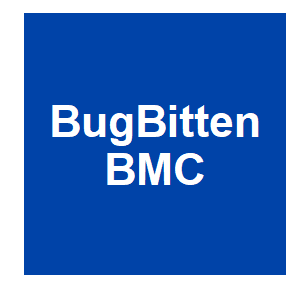
|
Mosquito population modification: the drive to malaria eradicationA. A. James, BugBitten BMC, 2020.
We have had considerable success in the past demonstrating that we can use modern molecular biological and insect transgenesis tools to make genes that prevent mosquitoes from passing on parasites (see 1 and 2). We have focused most recently on laboratory experiments to find ways ... Keywords: Anopheles, gambiae, gene drive synthetic, incompatibility, malaria, models, population modification, population suppression |
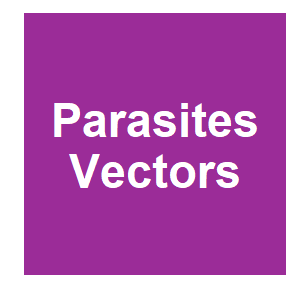
|
Assessing the acoustic behaviour of Anopheles gambiae (s.l.) dsxF mutants: implications for vector controlM. P. Su, M. Georgiades, J. Bagi, K. Kyrou, A. Crisanti and J. T. Albert, Parasites and Vectors, 13:507. 2020.
We analysed sound emissions and acoustic preference in a doublesex mutant previously used to collapse Anopheles gambiae (s.l.) cages. Keywords: Anopheles, gambiae, gene drive synthetic, incompatibility, malaria, models, population modification, population suppression |

|
Next-generation gene drive for population modification of the malaria vector mosquito, Anopheles gambiaeR. Carballar-Lejarazú, C. Ogaugwu, T. Tushar, A. Kelsey, T. B. Pham, J. Murphy, H. Schmidt, Y. Lee, G. C. Lanzaro and A. A. James, Proceedings of the National Academy of Sciences, 202010214. 2020.
We show here that the Cas9/guide RNA-based gene-drive components of a genetically-engineered malaria mosquito vector, Anopheles gambiae, achieve key target product profile requirements for efficacy and performance. Keywords: Anopheles, gambiae, gene drive synthetic, incompatibility, malaria, models, population modification, population suppression |

|
Abundance of conserved CRISPR-Cas9 target sites within the highly polymorphic genomes of Anopheles and Aedes mosquitoesH. Schmidt, T. C. Collier, M. J. Hanemaaijer, P. D. Houston, Y. Lee and G. C. Lanzaro, Nature Communications, 11. 2020.
ere we report the results of a survey of 1280 genomes of the mosquitoes Anopheles gambiae, An. coluzzii, and Aedes aegypti in which we determine that similar to 90% of all protein-encoding CGD target genes in natural populations include at least one target site with no DRAs at a ... Keywords: Anopheles, gambiae, gene drive synthetic, incompatibility, malaria, models, population modification, population suppression |

|
Transcontinental dispersal of Anopheles gambiae occurred from West African origin via serial founder eventsH. Schmidt, Y. Lee, T. C. Collier, M. J. Hanemaaijer, O. D. Kirstein, A. Ouledi, M. Muleba, D. E. Norris, M. Slatkin, A. J. Cornel and G. C. Lanzaro, Communications Biology, 2. 2019.
Here we present population genomic analyses of 111 specimens sampled from west to east Africa, including the first whole genome sequences from oceanic islands, the Comoros. Keywords: Anopheles, gambiae, gene drive synthetic, incompatibility, malaria, models, population modification, population suppression |

Contact
David O’Brochta
Foundation for the
National Institutes of Health
geneconvenevi@fnih.org
RSS

